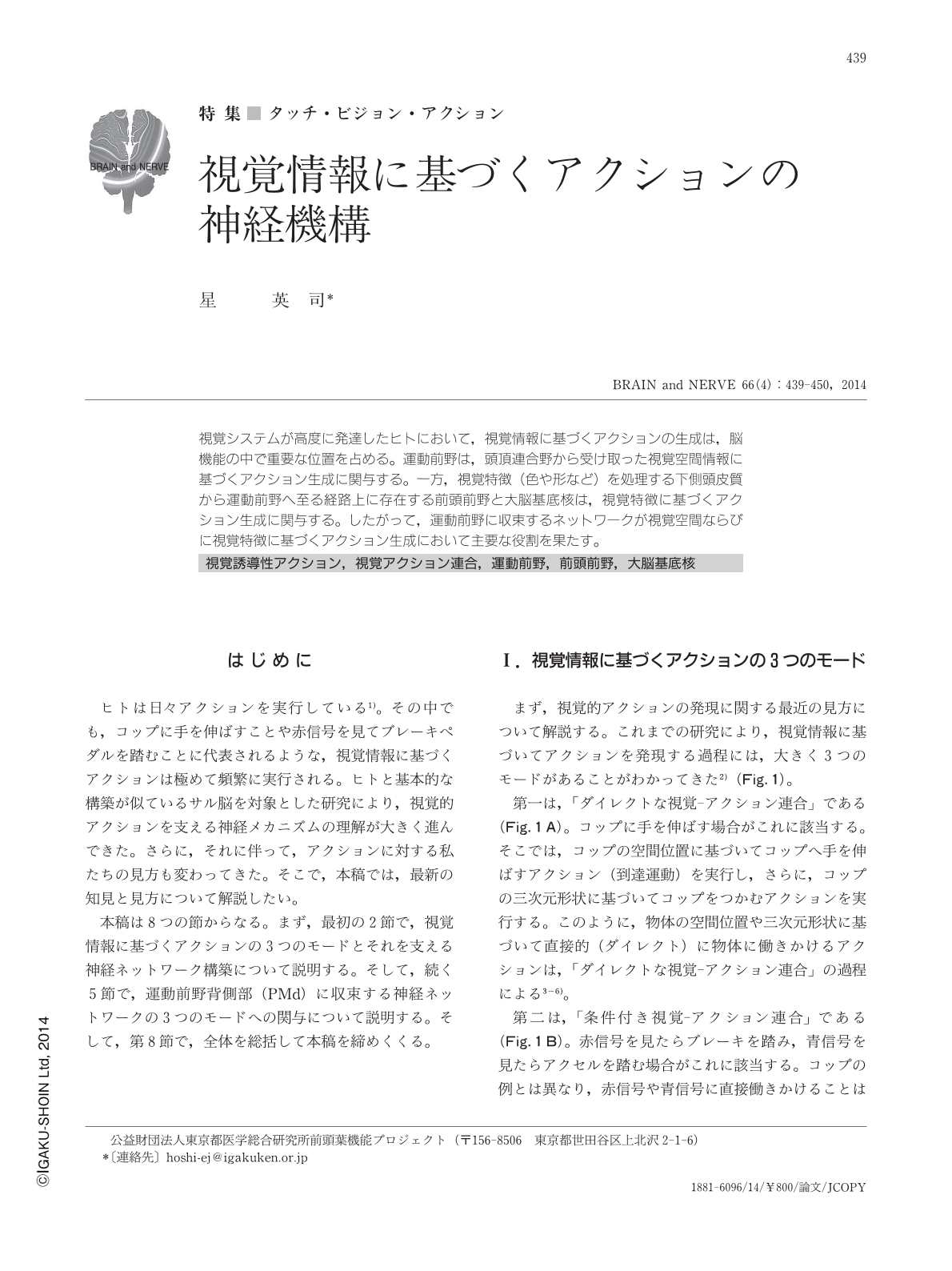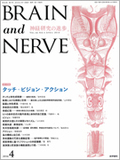Japanese
English
- 有料閲覧
- Abstract 文献概要
- 1ページ目 Look Inside
- 参考文献 Reference
- サイト内被引用 Cited by
視覚システムが高度に発達したヒトにおいて,視覚情報に基づくアクションの生成は,脳機能の中で重要な位置を占める。運動前野は,頭頂連合野から受け取った視覚空間情報に基づくアクション生成に関与する。一方,視覚特徴(色や形など)を処理する下側頭皮質から運動前野へ至る経路上に存在する前頭前野と大脳基底核は,視覚特徴に基づくアクション生成に関与する。したがって,運動前野に収束するネットワークが視覚空間ならびに視覚特徴に基づくアクション生成において主要な役割を果たす。
Abstract
Visually guided action is generated via multiple modes of information processing. Here, we discuss three modes of neural processing underlying visually guided action. The first mode involves direct visuo-action association. In this mode, an action is planned to reach and grasp a target based on information about the target position (for reaching) and shape (for grasping). The network connecting the premotor and parietal cortices plays a central role in this mode. The second mode involves conditional visuo-action association. In this mode, a particular action is selected based on a rule associating a visual feature with an action. The third mode involves conditional visuo-goal association. In this mode, a visual signal is associated with a behavioral goal, but not with an action. A particular action is subsequently selected to meet this goal. Areas on the route from the inferotemporal cortex to the dorsal premotor cortex, such as the prefrontal cortex and basal ganglia, play a role in achieving conditional visuo-action and conditional visuo-goal associations. In summary, our analysis suggests the involvement of multiple brain networks converging on the premotor cortex in the three modes of neural processing utilized for generating visually guided action.

Copyright © 2014, Igaku-Shoin Ltd. All rights reserved.


